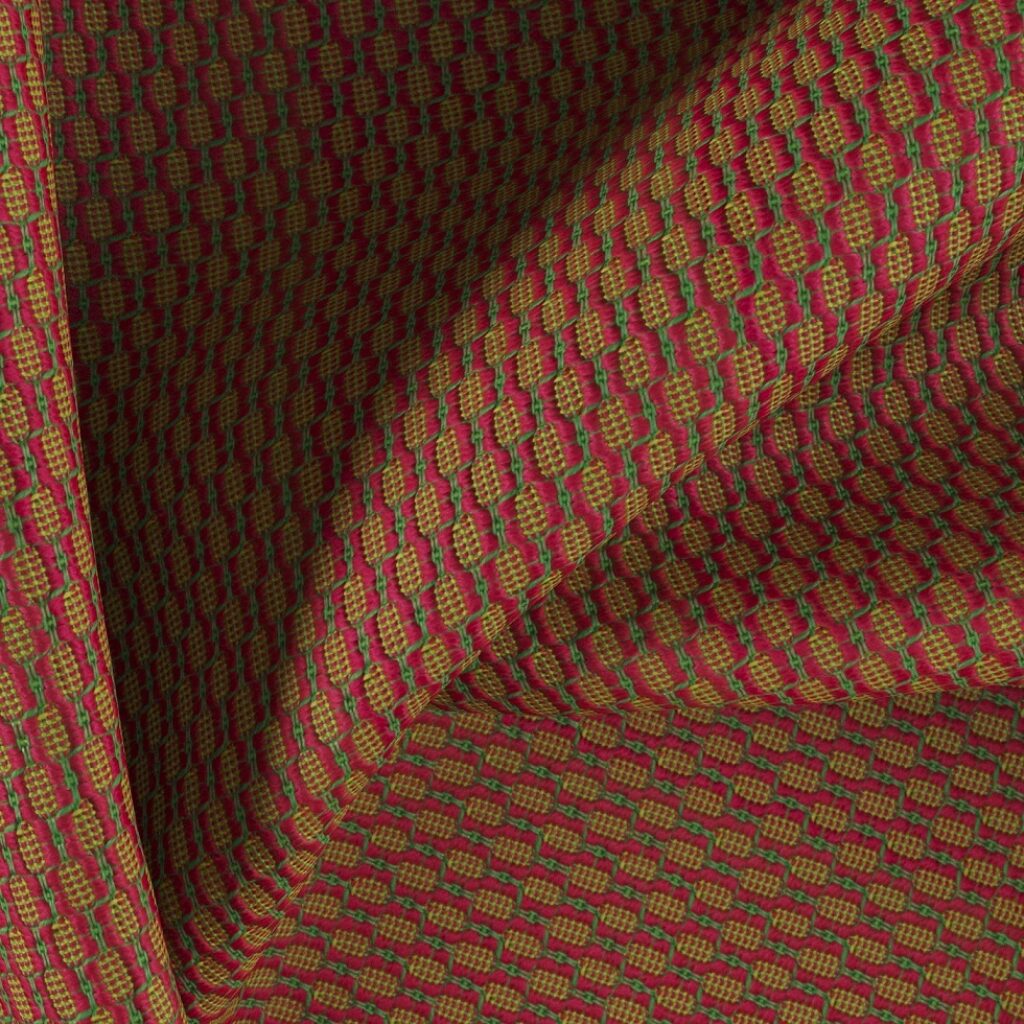How to clean polypropylene fabrics
Polypropylene (PP) fabrics are resilient to most dirt and many chemicals.
We still recommend that polypropylene upholstery fabrics are spot cleaned regularly enough to prevent a build-up of any dirt or debris like sand, gravel, even muddy paw-prints. But how do you do it?
What are polypropylene (olefin) fabrics made from?
Polypropylene is a synthetic fibre made from a modified version of the compound polypropylene. These fabrics are also called olefin fabrics. It's a durable, stain-resistant fabric used in upholstery, clothing, and even carpets because it resists wrinkles and stains.
Read about how polypropylene fabrics are made: Olefin furnishing fabric: everything you ever needed to know
Polypropylene is a synthetic fibre, which means it's made from man-made materials. The fibre is then spun into yarn and woven or knit into fabric. All these processes produce fabrics that are inherently stain resistant—they simply can't absorb liquids like natural fibres do.
Good to know: polypropylene fabrics are inherently stain-resistant
When it comes to cleaning polypropylene fabrics, the rules are simple. You just need warm water, not hot water. The reason is simple too: hot water can damage the fabric and cause it to shrink or discolour. Polypropylene fabrics are stain-resistant, but they're not completely stain proof. That's why you need a proper washing routine that helps remove stains quickly and easily while keeping your upholstery or apparel looking nice for as long as possible.
Because they're so easy to clean, polypropylene fibres are often used in activewear as well as upholstery fabrics because they can withstand frequent laundering. They're also durable enough to be used as automotive seating fabric in your car or truck.
Polypropylene fabrics can also be resistant to shrinkage, fading and wrinkling over time (depending on the quality of the material).
How to clean polypropylene fabrics
Because these fabrics are made from polyethylene or polypropylene, they are almost immune to dirt and even some chemicals.
However, we still recommend that upholstery fabrics are spot cleaned regularly enough to prevent a build-up of dirt and debris; the exact timing will depend on the current conditions.
Cleaning steps:
- Use warm water, not hot water, to properly clean polypropylene fabrics
- The recommended washing temperature for polypropylene fabrics is warm water. Cold water will cause shrinkage, and hot water can cause colour loss and fading.
- To remove dirt and debris from a piece of polypropylene fabric, mix a weak concentration of non-abrasive pH neutral detergent in warm water. The temperature should stay below 50 degrees centigrade; otherwise, the fabric will be weakened against UV radiation. Use this mixture with a cloth, brush or mop that has soft bristles.
- After washing is completed, rinse off thoroughly with plenty of fresh water.
Find full FibreGuard fabric cleaning steps here.
A note on polypropylene fabrics and the environment
There is no silver bullet when it comes to choosing the “right” fabric - there's no fabric yet that has zero impact on the environment. That's why, to assess the impact of our products, we use the Higg Index. From our research, this is the most comprehensive tool available, providing a wide range of environmental metrics, based on a large variety of textile compositions and manufacturing processes used.
When compared to fashion, interior and exterior household furnishing fabrics are more durable, require fewer washing cycles and have greater longevity. However, we are committed to our responsibility to ensure we find solutions for better products and product life cycles. Read more about our sustainability commitment here.
Care and maintainance of polyproplyene fabrics: the bottom line
Taking good care of textile products is one of the best ways we can live more sustainably on an individual level. It extends the life of our furnishings and our clothing, as well as the time we can use them. It also reduces pressure on natural resources, contributes to less waste, greenhouse gasses, and carbon emissions.
Cleaning polypropylene fabrics properly and using them for the longest amount of time we possibly can, is important. Now that you know how to clean polypropylene fabrics, you’ll be able to keep them looking great (and not smelling like your gym bag).
Fabrics education for a more informed future
We hope that we’ve helped you understand the world of polypropylene fabrics, especially when they’re used for upholstery and drapery applications. FibreGuard’s upholstery fabrics are engineered from the inside out to perform, so no wonder they’re easy on the hands (and eyes). Read further about stain-resistant fabrics to understand how.
